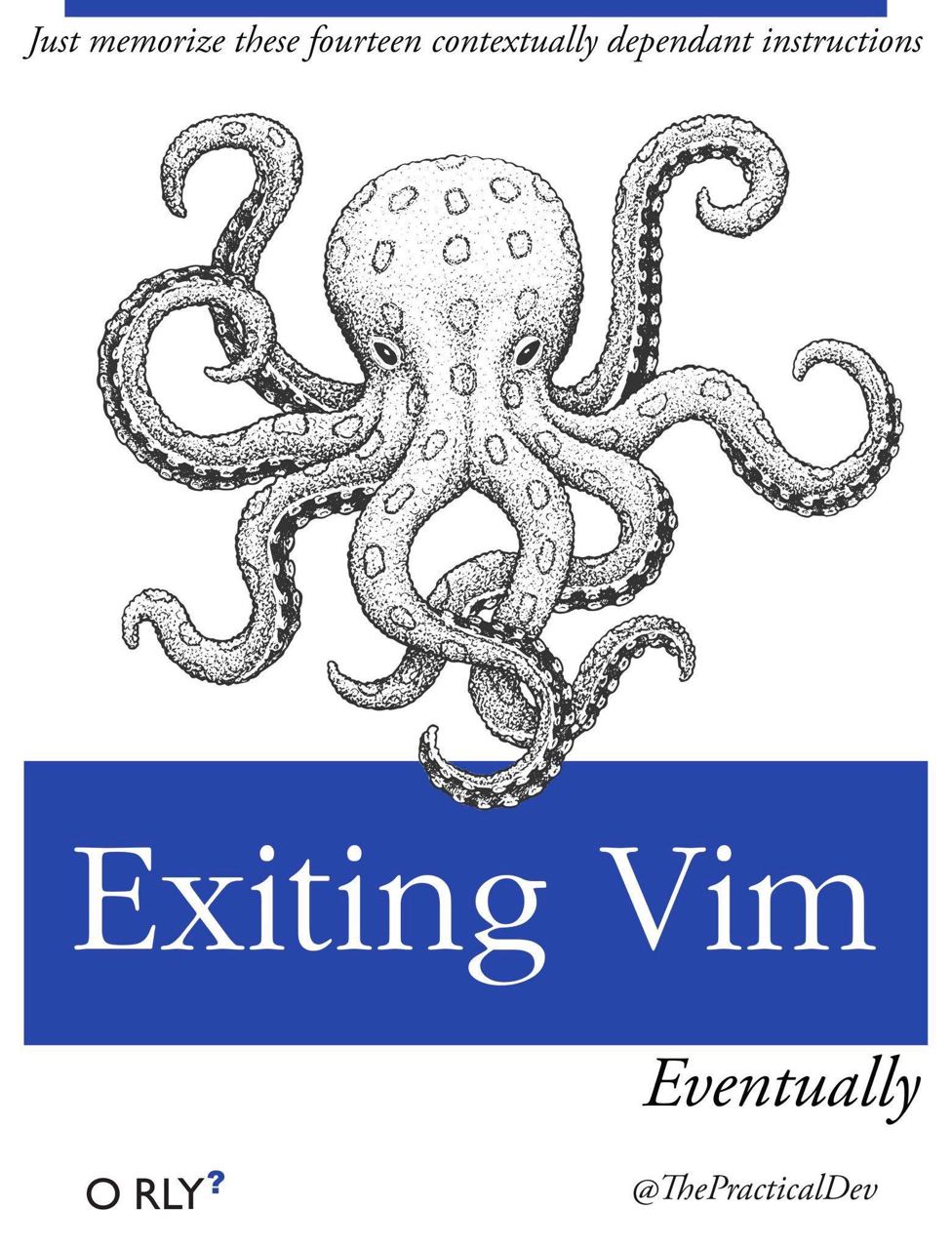
In the vast, enigmatic world of Terminalia, a land where command lines interface with the very fabric of digital creation, there exists a rite of passage so arcane, so fraught with mystery, that it has become the stuff of legends: Exiting Vim. This ancient text editor, revered for its power and efficiency, is also feared for its complexity and the cryptic nature of its commands, especially the seemingly simple act of exiting.
Our protagonist, a valiant coder named Avery, found themselves ensnared within the labyrinthine confines of Vim during what began as a routine quest to edit a configuration file. With the changes made, Avery sought to exit Vim and return to the familiar lands of the terminal prompt. However, they quickly discovered that in Vim, nothing is as straightforward as it seems.
"Just memorize these fourteen contextually dependent instructions," advised the Scroll of Stack Overflow, a tome of immense knowledge and Avery's only guide in this ordeal. The scroll spoke of a series of mystical keystrokes, each more convoluted than the last, capable of freeing a user from Vim's grasp—but only if performed with perfect precision and in the correct sequence.
First came the attempt with :q, a command whispered to be the key to escape for those whose journey through the file was without alteration. But Avery's path had been marked by changes, leaving :q to fail, its power insufficient to overcome Vim's hold.
Then, emboldened by the Scroll's teachings, Avery invoked :q!, the forceful variant, its power rooted in the willingness to abandon changes and retreat. Yet, even this command was but a stepping stone, a lesson in the necessity of understanding Vim's deeper magics.
:wq was the next incantation to be tried, a dual-edged sword that sought to both save Avery's changes and grant them exit. But Vim, ever capricious, demanded more—a proper context, an understanding of modes, and the realization that even saving could not always guarantee escape.
As Avery delved deeper into the Scroll of Stack Overflow, they learned of :x, another path to salvation, similar to :wq but shrouded in subtle differences known only to those who had spent lifetimes in the study of Vim's secrets.
The trials continued, with ZZ and ZQ offering their assistance—silent sentinels in the battle for freedom, their power unlocked by the Shift key, a physical totem of intent and determination.
Each attempt brought Avery closer to understanding, each failure a lesson in the profound depth and complexity of Vim. The journey was not just about exiting an editor but about mastering it, about learning to navigate its depths with the same ease and grace as those who had constructed its intricate architecture.
Finally, with a deep breath and a clarity born of trials endured, Avery performed the correct sequence of commands. Vim, recognizing Avery's resolve and mastery, released them from its embrace, allowing them to return to the terminal prompt, a changed coder.
The tale of "Exiting Vim: Just memorize these fourteen contextually dependent instructions" spread far and wide across Terminalia, a testament to the complexity and power of Vim, and a reminder to all who dwell within this digital realm that mastery of even the simplest tasks can require patience, persistence, and a willingness to delve into the arcane.
And so, Avery's ordeal became a beacon for others, a story of triumph over complexity, and a lesson in the importance of understanding the tools with which we shape the digital world. For in the heart of Vim's challenge lies not just an editor to be exited, but a world to be explored, understood, and ultimately, mastered.